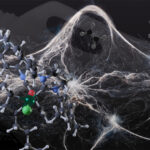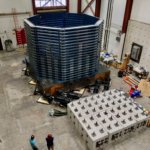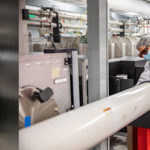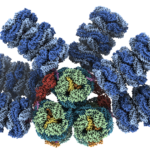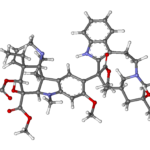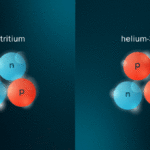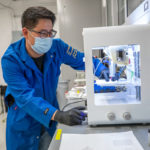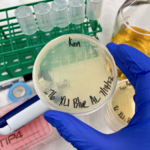Latest News
Upgraded Laser Facility Paves the Way for Next-Generation Particle Accelerators
Berkeley Lab researchers have completed a major expansion of one of the world’s most powerful laser systems, creating new opportunities in accelerator research. The expansion created a second beamline for the petawatt laser at the Berkeley Lab Laser Accelerator (BELLA) Center, enabling the development of next-generation particle accelerators for applications in science, medicine, security, and industry.
Research Team Reveals A ‘Blueprint’ for Photosynthesis
This story is adapted from a news release from Michigan State University -By Matt Davenport Researchers at Michigan State University (MSU), UC Berkeley, the University of Southern Bohemia, and Lawrence Berkeley National Laboratory (Berkeley Lab) have helped reveal the most detailed picture to date of important biological “antennae.” Nature has evolved these structures to harness
An Anti-cancer Drug in Short Supply Can Now be Made by Microbes
The supply of a plant-derived anti-cancer drug can finally meet global demand after a team of scientists from Denmark and the U.S. engineered yeast to produce the precursor molecules. Previously, obtaining one gram of the chemotherapy drug required growing and harvesting 500 kilograms of the native plant’s leaves.
Peering Into Mirror Nuclei, Physicists See Unexpected Pairings
Using a new technique, physicists studying energetic collisions in light nuclei found something surprising: protons collide with their fellow protons and neutrons with their fellow neutrons more often than expected. Understanding these collisions is important for interpreting data in a wide range of physics experiments studying elementary particles.
Print, Recycle, Repeat: Scientists Demonstrate a Biodegradable Printed Circuit
A team led by Berkeley Lab’s Ting Xu has developed a fully recyclable and biodegradable printed circuit. The advance could divert wearable devices and other flexible electronics from landfill, and mitigate the health and environmental hazards posed by heavy metal waste.
Protein Structures Aren’t Set in Stone
A new study on rubisco, a photosynthetic enzyme thought to be the most abundant protein on the planet, shows that proteins can change their structural arrangement with surprising ease. The findings reveal the possibility that many of the proteins we thought we knew actually exist in other, unknown shapes.



